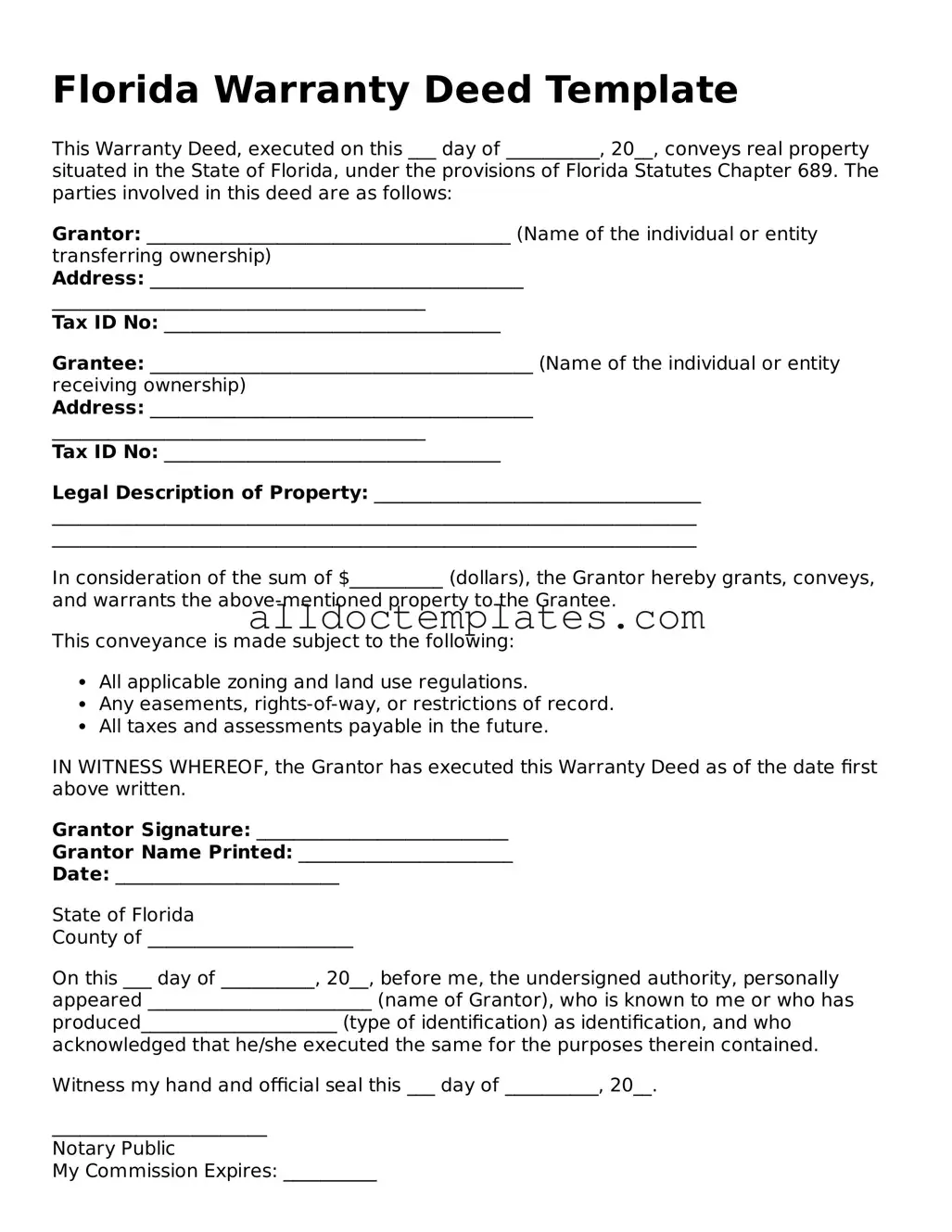Florida Warranty Deed Template
This Warranty Deed, executed on this ___ day of __________, 20__, conveys real property situated in the State of Florida, under the provisions of Florida Statutes Chapter 689. The parties involved in this deed are as follows:
Grantor: _______________________________________ (Name of the individual or entity transferring ownership)
Address: ________________________________________
________________________________________
Tax ID No: ____________________________________
Grantee: _________________________________________ (Name of the individual or entity receiving ownership)
Address: _________________________________________
________________________________________
Tax ID No: ____________________________________
Legal Description of Property: ___________________________________
_____________________________________________________________________
_____________________________________________________________________
In consideration of the sum of $__________ (dollars), the Grantor hereby grants, conveys, and warrants the above-mentioned property to the Grantee.
This conveyance is made subject to the following:
- All applicable zoning and land use regulations.
- Any easements, rights-of-way, or restrictions of record.
- All taxes and assessments payable in the future.
IN WITNESS WHEREOF, the Grantor has executed this Warranty Deed as of the date first above written.
Grantor Signature: ___________________________
Grantor Name Printed: _______________________
Date: ________________________
State of Florida
County of ______________________
On this ___ day of __________, 20__, before me, the undersigned authority, personally appeared ________________________ (name of Grantor), who is known to me or who has produced_____________________ (type of identification) as identification, and who acknowledged that he/she executed the same for the purposes therein contained.
Witness my hand and official seal this ___ day of __________, 20__.
_______________________
Notary Public
My Commission Expires: __________
